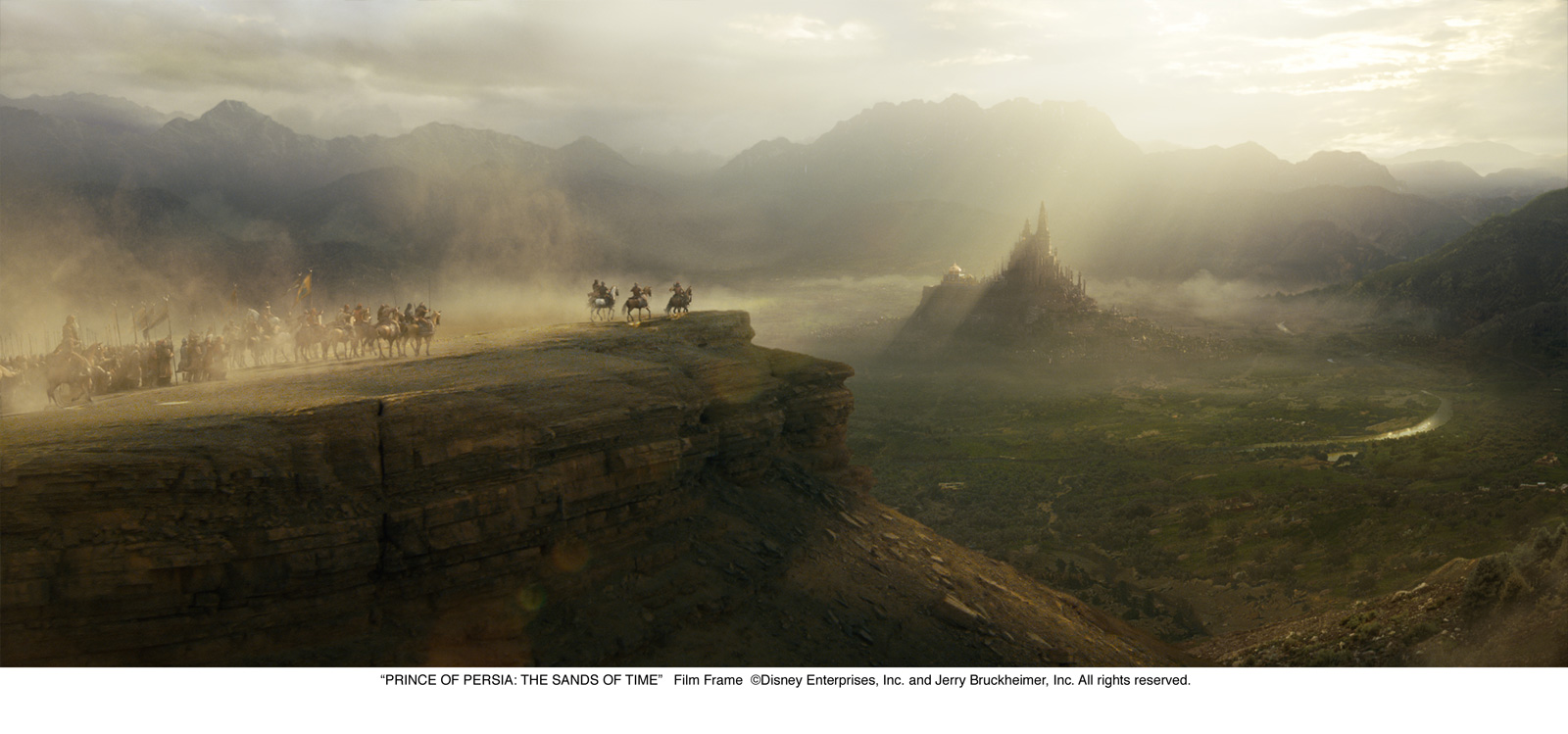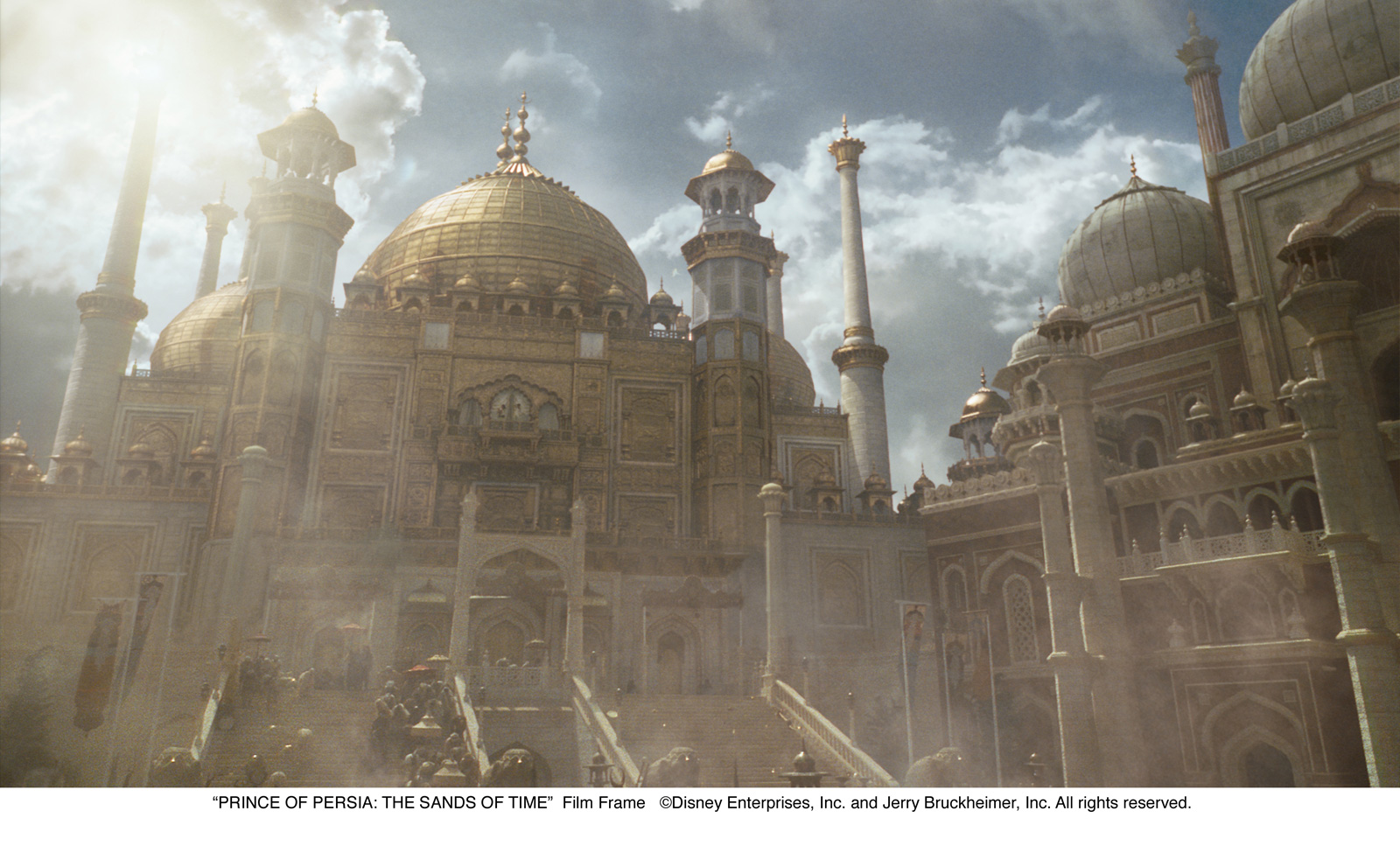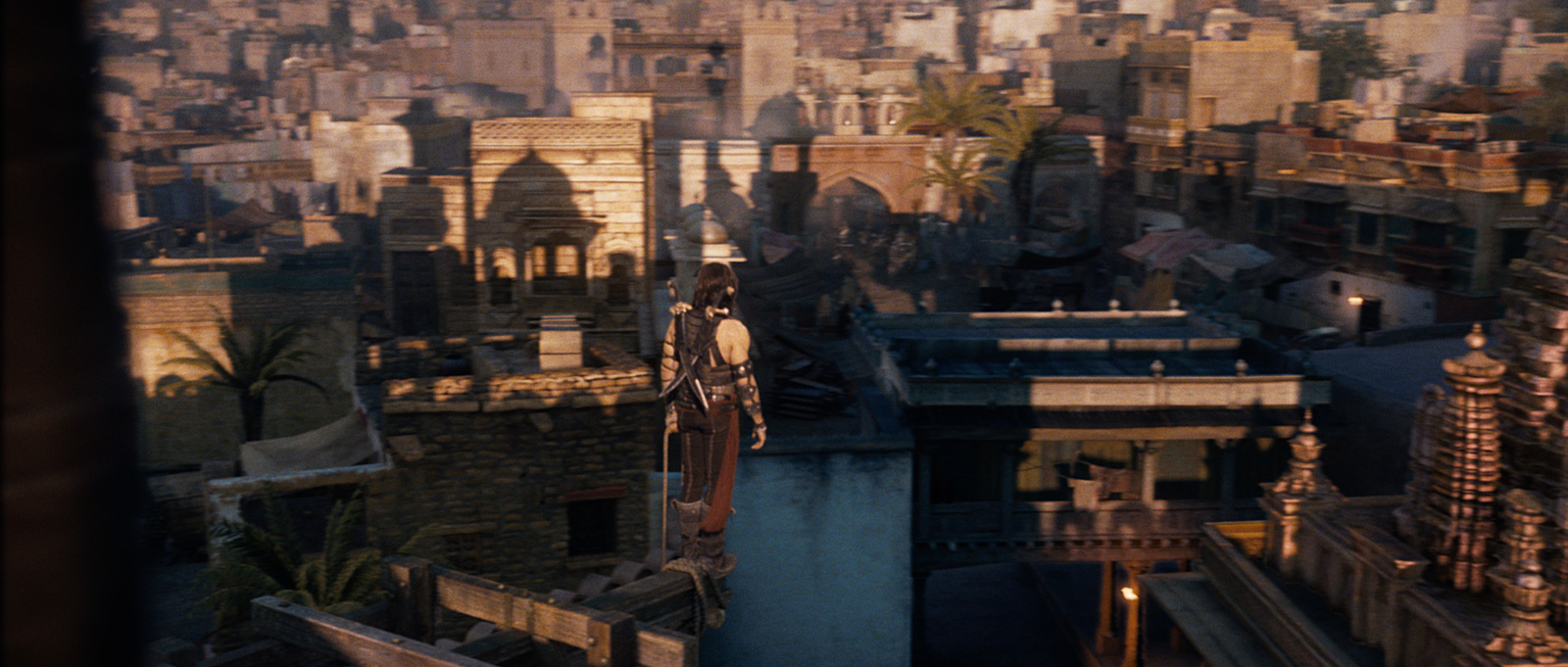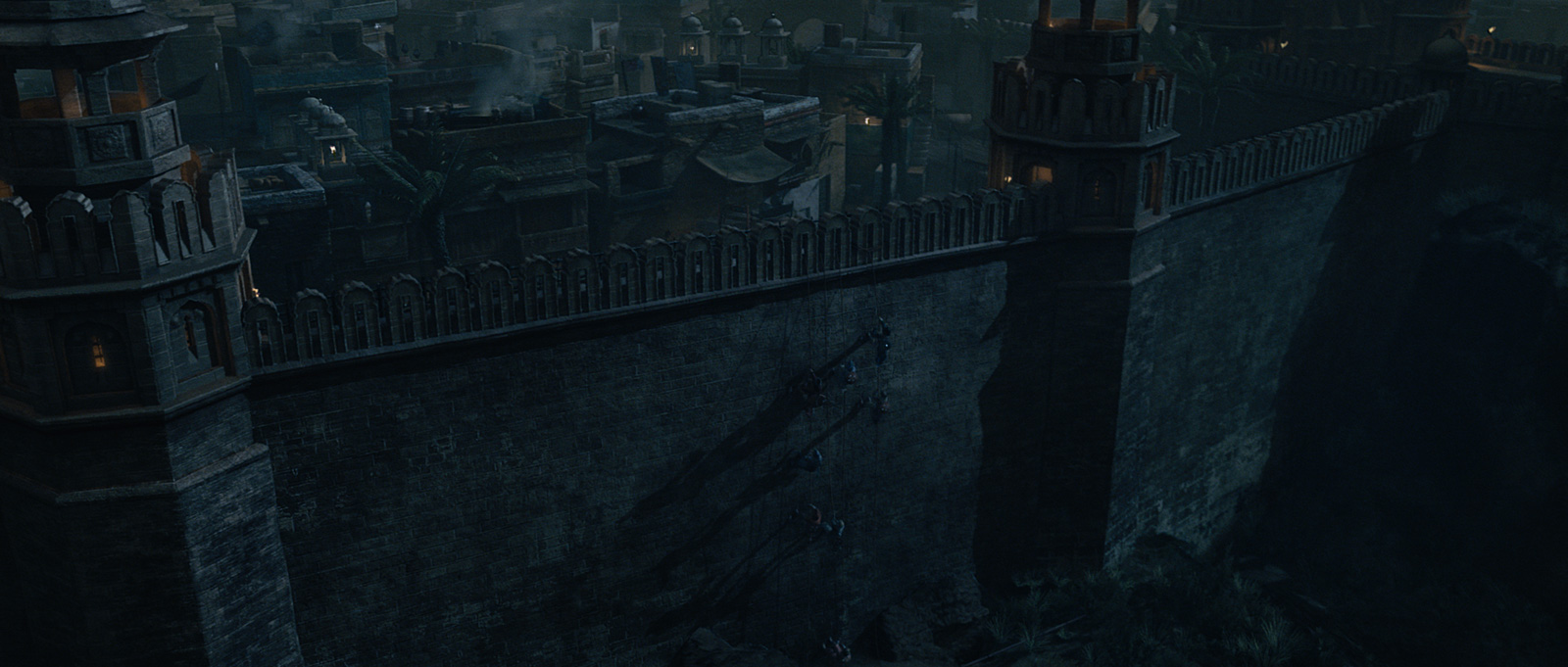Stephane Ceretti worked for nearly 12 years at BUF in Paris on films such as ALEXANDER, MATRIX 2 and 3, HARRY POTTER 4 or BATMAN BEGINS. Then he moved to MPC in London as VFX supervisor on PRINCE OF PERSIA. Since this film, he joined Method Studios still in London, where he oversaw THE SORCERER’S APPRENTICE.
What is your background?
First of all I am french. I spent the first 12 years of my career at Buf Compagnie in Paris, where I had the chance to work as VFX supervisor on films such as ALEXANDER, MATRIX 2 and 3, HARRY POTTER 4, BATMAN BEGINS, THE PRESTIGE, SILENT HILL and BABYLON AD. I joined MPC in 2008 as VFX supervisor on PRINCE OF PERSIA.
How was the collaboration with Mike Newell and the production VFX supervisor Tom Wood?
Very good ! On this kind of production we usually spend most of our time with the VFX supervisor. Tom Wood used to work at MPC, that helped breaking the ice very quickly. I ended up going to Morrocco and in Pinewood studios where we shot most of the battle sequence happening at the beginning of the film. That period of time spent on the shoot is essential to understanding what the director is after as well as getting a visual sense of the universe that the production designer and Tom Wood wanted to depict in the movie.
What did MPC on this show?
MPC was in charge of developping the look of the City of Alamut and its surroundings. We also had to create a CG persian army for the opening battle sequence. Our work covered simple set extension to complement the sets built in Morroco to views of a Full CG representation of the city of Alamut for wide opening shots. Our biggest task was to create the enviroment and armies that are attacking the Eastern Gate of Alamut. Considering this was mostly shot in Pinewood studios we had a big task in front of us to make it look like it was shot in location and give the scope that this sequence needed.
What references did you have for the city of Alamut?
The production designer did a layout and design of the city : the walls, the inner city with, the various palaces and gardens, the big white and gold temple at the base of the super high tower in the middle of the city. We then had to extrapolate from that and create the entire city. We did a lot of research and based on stills that Wolf Krueger gave us from Rajasthan in India we ended up creating a map of indian locations we would have to visit to create a library of buildings, trees,villages and cities. We then sent our digital photographer James Kelly there for 3 weeks to shoot as much textures and references as he could. James also came to Morroco to shoot stills of the sets, as we would have to extend these and mix and match them with india locations. We also took stills of morrocan locations for the surroundings of the City, as well as India locations and as I was away in Corsica for a break I took some other stills of corsican mountains which ended up being the perfect match for what we wanted. Again, we ended up using a mix of all these sources to create the city surroundings.
In terms of the look of the city, and the light ambience, we spent a lot of time looking at references stills in books and on the net, but Tom showed us painting from the Orientalist painters. These were stunning and gave us a good sense of the style of light and levels of haze and myst and dust we
would have to put in the city.
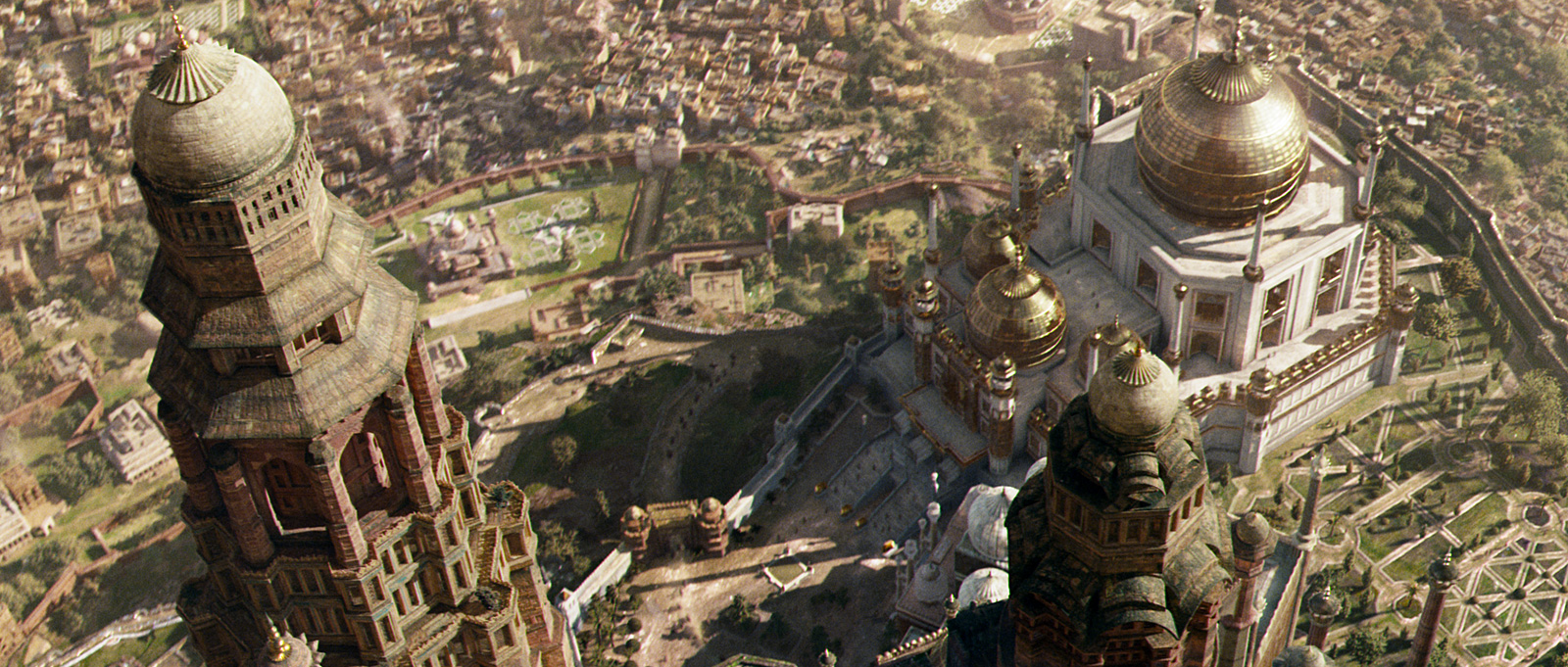 |
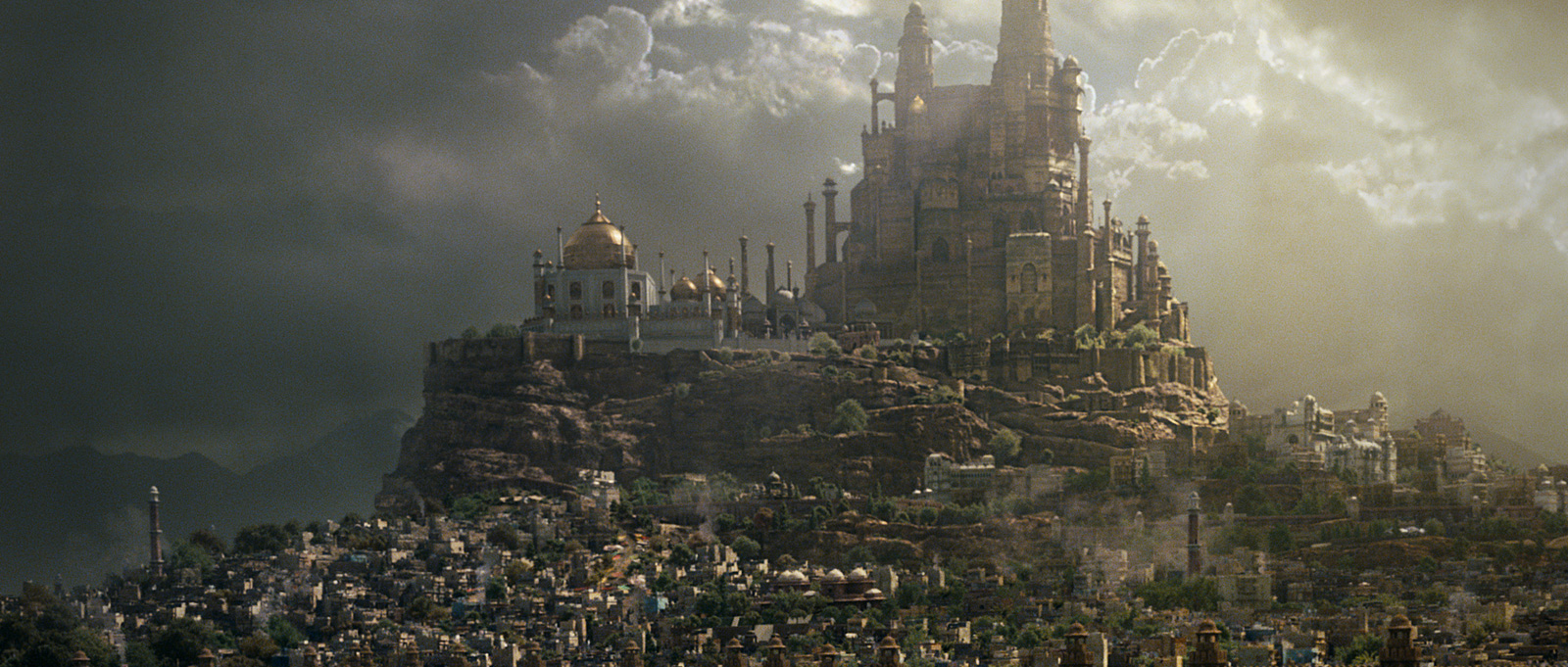 |
Were you in contact with Jordan Mechner and Ubisoft?
Not really, no.
Can you explain to us how you recreate the city in CG?
It was a big undertaking. Based on the thousands of stills that James took back from India and Morroco we created a library of buildings sorted by styles and sizes. We then took the layout from the Art department and created some layout tools based on alice, our crowd system that we customized to accomodate for buildings and city props, to design the city space. This first interactive pass allowed us to do quick modifications that we could show to Tom to get approval. Once the main squares/gardens/streets and palace and markets had been layed out from key views of the city, we could get into the minutia of customising some pieces of the city by hand to match specific shot needs. We had to create management tools to allow us to decide what kind of props would be used, where to put the trees (we created a huge library of trees, with particles leaves that we could render and keep the memory usage manageable) …
The city was a huge asset to work with but Renderman handled the renders pretty well.
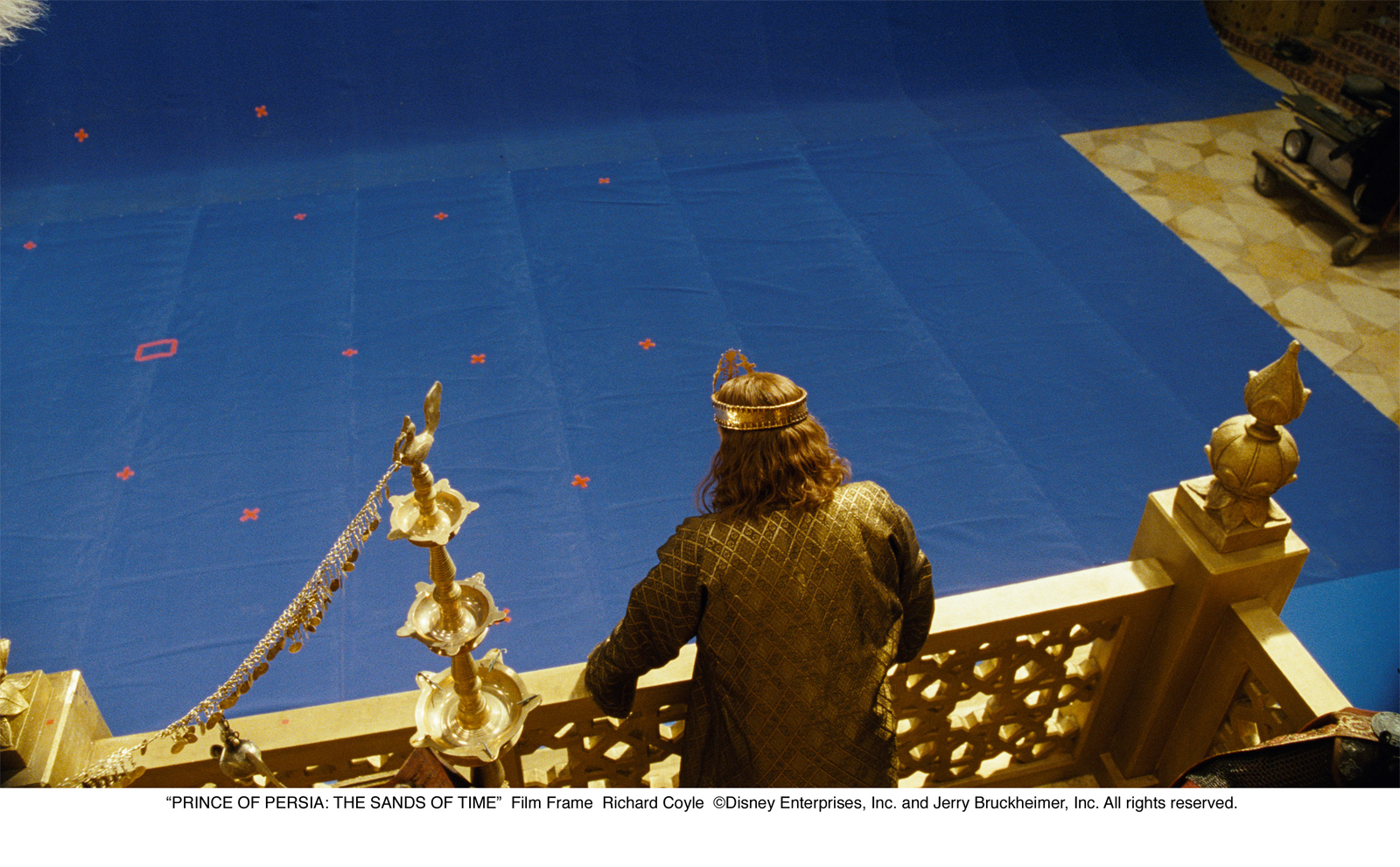 |
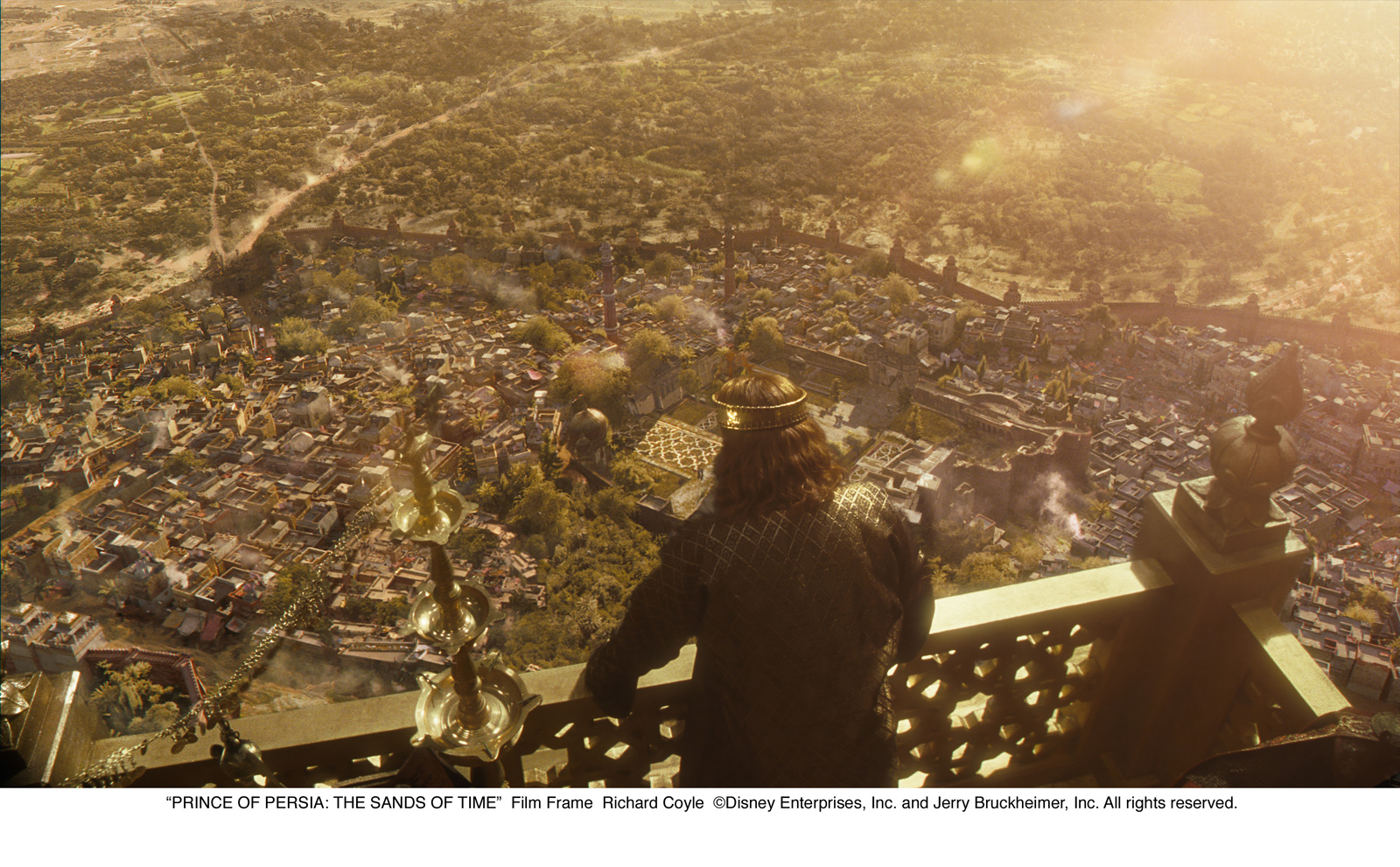 |
During shooting scenes in the city of Alamut, can you tell us the size of the real set?
The sets built in Morocco were huge, but it was never big enough ! so we ended up having to extend quite a lot of them. But the East Gate set that was built inside the 007 stage in Pinewood studios was really huge, it took most of the space in the studio and we were really close to the ceiling, making it difficult to light and operate. Blue screen coverage was also difficult. It was one of the biggest interior sets I’d ever seen.
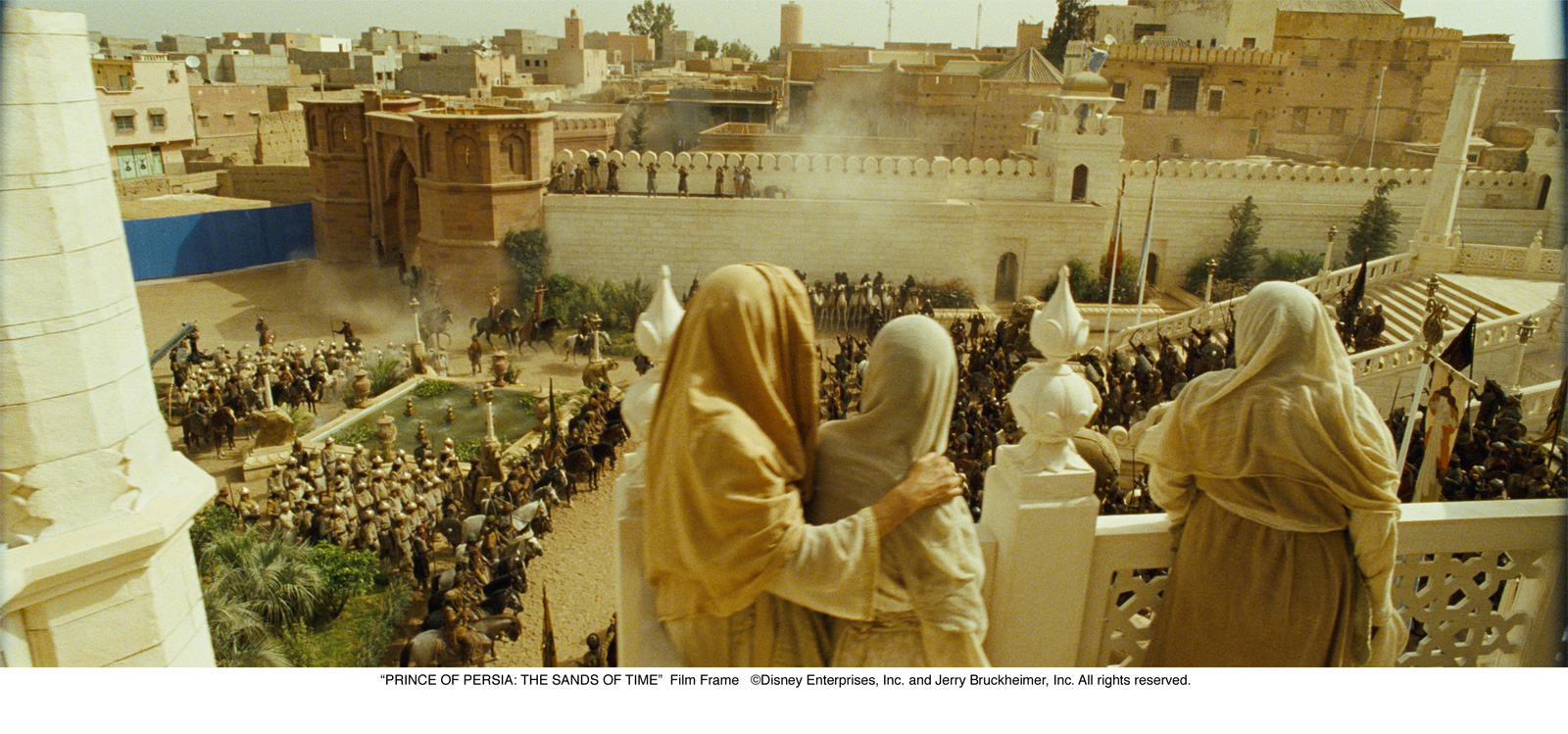 |
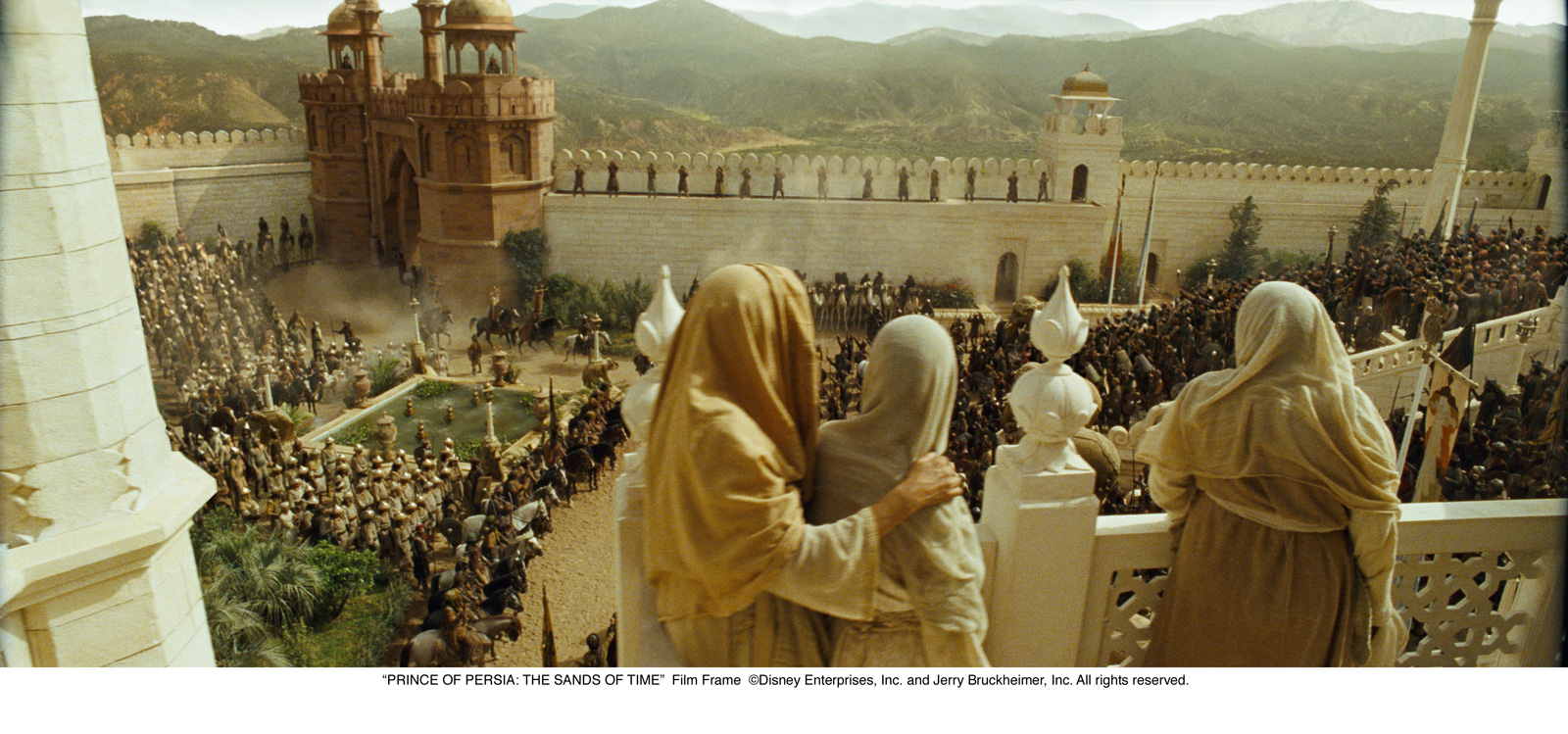 |
What was the proportion of extras and digital doubles made with ALICE during the attack of the Persian army?
It depends on the shots, but sometimes we had about 50 to 100 extras and ended up making it 20 to 50 times bigger. I think we had a total of 300 to 400 extras on big wide shots but again we ended up having many many more in CG. PRINCE OF PERSIA was not a huge crowd show for us on that sense, all the crowd shots we had ended up being fairly simple.
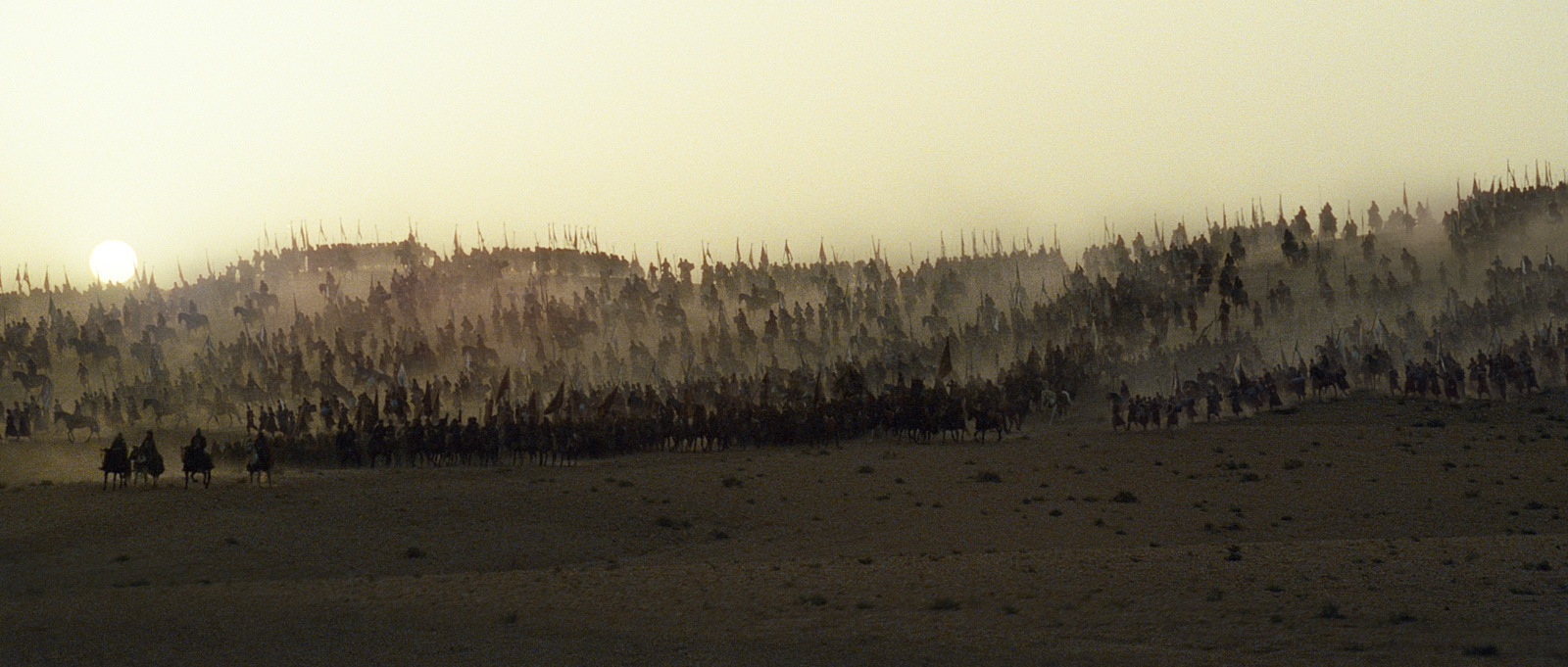 |
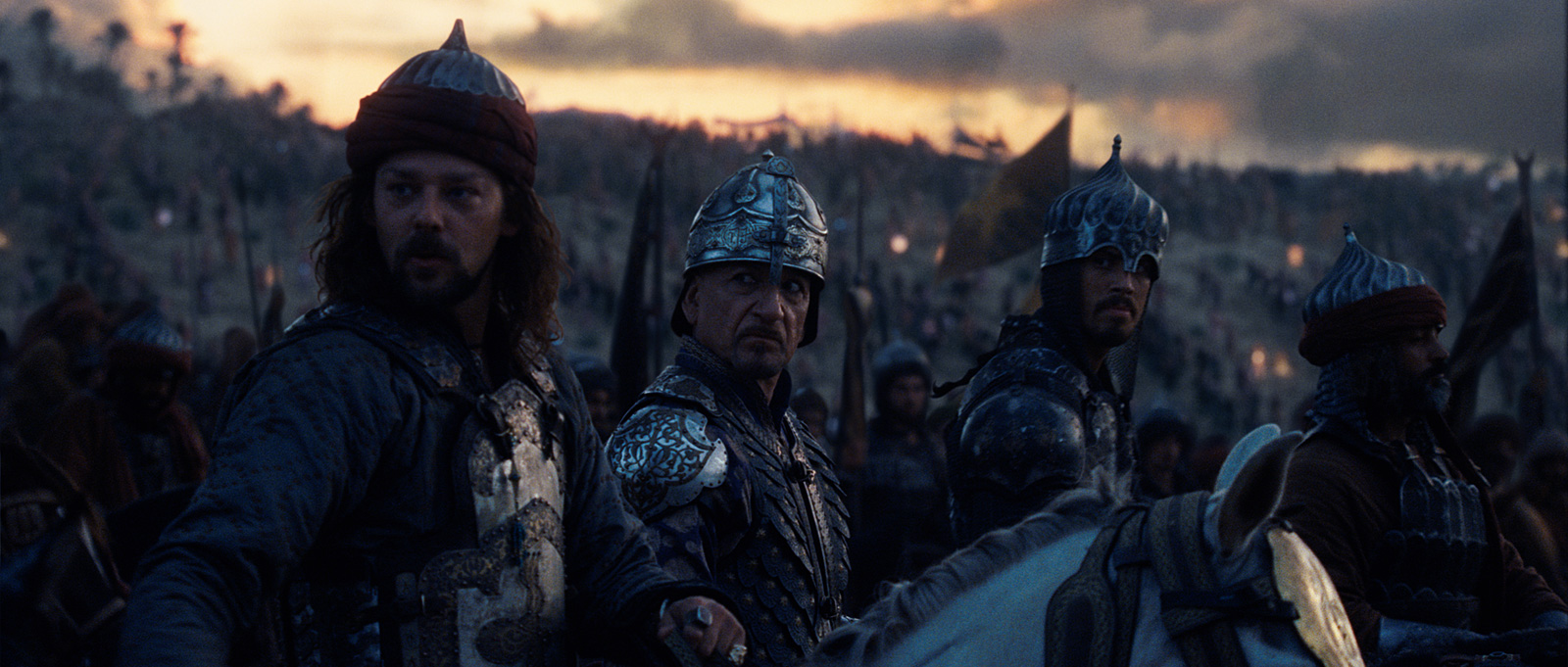 |
After ROBIN HOOD, this new project is an opportunity to admire ALICE work on an army. How do you ensure that the rendering of these shots do not take years?
Compared to the city shots, the army shots were a real piece of cake I can tell you !
About the beautiful shot that rotates 360 degrees around the Prince Dastan before his jump. How did you make it?
We shot Jake in front of a green screen on a set in Pinewood, with the wooden beam on which he stands … and all the rest is CG. The East Gate on which he is standing is a CG representation of the set in Pinewood, the close surroundings is a 3D reconstruction of the Moroccan sets with extra top ups and then in the back you can see our 3D city and the surrounding CG mountains based on stills from Corsica. So it’s a big collage of many techniques and locations and CG. We also have CG armies and city crowd into the shots. It was one of the most complex shot to get right as we do a lot
of work with atmospherics, the light coming from the sun…
Can you tell us about the shots for the giant sandstorm that destroyed Alamut?
We did Alamut in these shots, but we did not do the sandstorm and the destruction. These were shared with another facility.
What was the biggest challenge on this project?
Getting the city to render, and the Golden Palace extensions to look real !
How many plans have you done and what was the size of your team?
around 300 shots in the end, and maybe around 80 to 100 people worked on it, but not all at the same time.
Is there a shot or a sequence that makes you lose hair?
They all do !
What did you keep about this experience?
It was great working with MPC for the first time, as well as working with Tom and Mike. Also, being on a Bruckheimer production is really demanding but extremely rewarding and quite fun, they are really passionate about the work and always push for more, which is cool from an artist’s point of view.
What is your next project?
Well, I just finished working on another Bruckheimer Production called « THE SORCERER’S APPRENTICE » for Method Studios in London. And I am starting onto another project from Marvel shooting in the UK.
What are the four films that gave you the passion for cinema?
I can’t choose, they all give me a passion for Cinema, even the ones that don’t have visual effects in them ! I am quite eclectic in my tastes, so I can enjoy a movie like PRINCE OF PERSIA or STAR WARS or a Chris Nolan movie or a french movie but not for the same reasons. I could not really choose just 4 movies …
A big thanks for your time.
// WANT TO KNOW MORE?
–MPC Breakdown: VFX Breakdown for PRINCE OF PERSIA.
– The Moving Picture Company: PRINCE OF PERSIA dedicated page on MPC website.
© Vincent Frei – The Art of VFX – 2010


